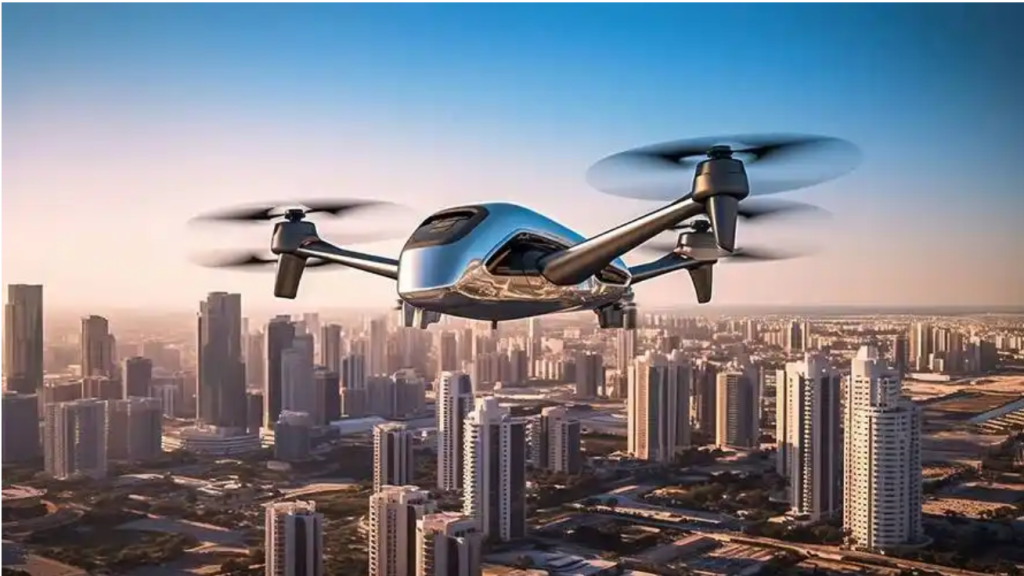Graphene Aviation Battery Boosts Low-altitude Economy’s “High-flying” Potential
At the recently grand opening of the Winter Asian Games, China Aviation Engine Corporation (AECC) showcased its self-developed graphene thermal management technology and intelligent heating products. Recently, the Science and Technology Daily published an article titled “Graphene Aviation Battery Boosts Low-altitude Economy’s ‘High-flying’ Potential,” highlighting AECC’s innovative use of graphene materials in manufacturing aviation batteries, and how they contribute to the development of the low-altitude economy and general aviation. Let’s dive deeper into the potential of graphene materials.

Graphene Aviation Battery Boosts Low-altitude Economy’s “High-flying” Potential
By: Sun Yu, Science and Technology Daily
On February 8th, while the festive atmosphere of the Chinese New Year was still in the air, the AECC Beijing Aviation Materials Institute (referred to as “Aviation Materials Institute”) officially launched the pilot production line for graphene aviation batteries. The machinery hummed as technicians focused intently on adjusting the equipment parameters. The graphene aviation batteries produced here will be applied to hybrid-powered drones.
Graphene, often called the “king of new materials,” boasts outstanding properties like high electrical and thermal conductivity and rapid heating. Yan Shaojiu, director of the Graphene New Energy Materials Center at the Aviation Materials Institute, told Science and Technology Daily: “Compared to traditional batteries, aviation batteries made using graphene and other new materials can improve energy density by over 50%.”
As a representative of new productive forces, the low-altitude economy has become a key direction for nurturing new drivers of growth. In 2024, various regions have introduced specific policies and action plans to support the low-altitude economy, many of which mention the development and application of high-performance power batteries.
Like new energy vehicles, the mass application of electric vertical takeoff and landing aircraft (eVTOL) and drones—key scenarios in the future low-altitude economy—will rely heavily on high-performance power batteries. Power battery costs account for about 30% to 40% of the total cost of new energy vehicles, so the Chinese aviation power battery market holds significant potential. Major power battery enterprises with technological advantages, such as CATL and EVE Energy, have entered the low-altitude economy sector to build the “power source.”
Compared to power batteries for new energy vehicles, aviation power batteries have higher requirements for safety, energy density, power density, fast-charging performance, and cycle life. Energy density, in particular, is a key indicator of battery performance, directly influencing battery endurance and efficiency.
Energy density refers to the amount of energy a battery can release per unit volume or mass, measured in watt-hours per kilogram (Wh/kg). Yan Shaojiu explained: “The energy density of traditional batteries is around 250 Wh/kg, which is less than 1/40th of aviation kerosene.” According to the 2023-2024 China Civil Unmanned Aircraft Development Report published by the China Civil Aviation Association, battery endurance is one of the bottlenecks currently limiting drone development.
Introducing new materials is one way to improve battery performance. Graphene, with its excellent conductivity and large specific surface area, can significantly enhance the energy density of lithium batteries. “For example, to develop lithium-sulfur batteries with an energy density potentially exceeding 600 Wh/kg, graphene’s high conductivity and large surface area are essential,” said Yan Shaojiu.
It is important to note that aviation batteries on the market still fall short of the 400-500 Wh/kg threshold. “400 Wh/kg is a watershed, roughly equivalent to twice the power of a typical new energy vehicle battery, supporting the flight of small general aviation aircraft,” explained Yan.
In 2008, domestic research institutions began to explore the preparation and application of graphene materials. In 2016, after the formation of the China Aviation Engine Corporation, graphene lithium battery technology became a key development focus and received strong support. The Aviation Materials Institute established the Graphene New Energy Materials Research Center, attracting top talent from both China and abroad, and supporting research through various funding projects.
In recent years, the Aviation Materials Institute has overcome multiple key technical challenges and developed a batch production system for graphene materials with independent intellectual property rights. “Our team has developed graphene high-power lithium battery technology and graphene ultra-low-temperature lithium battery technology,” said Yan. The high-power lithium battery technology can discharge high power, ensuring high safety while achieving 30C ultra-high discharge rates (with discharge completed in as little as 2 minutes). The ultra-low-temperature lithium battery technology ensures that electrical equipment operates normally in environments as cold as -40°C, meeting the needs for high-altitude takeoffs of low-altitude aircraft.
The Aviation Materials Institute has also developed representative achievements, such as ultra-thin lithium-magnesium alloy anode materials, and secured 37 relevant patents. “The ultra-thin lithium-magnesium alloy anode material uses graphene as a three-dimensional current collector and applies graphene surface modification technology. Lithium batteries made from this material can achieve an energy density of 400 Wh/kg,” said Yan.
Currently, some of the Aviation Materials Institute’s technical achievements have moved from the laboratory to the market, helping the low-altitude economy “take off” in full force. The Institute has collaborated with customers on developing graphene ultra-low-temperature battery technology, successfully applying graphene ultra-low-temperature lithium batteries to low-altitude electric equipment. After multiple rounds of testing and optimization, the graphene ultra-low-temperature square-shell batteries have achieved 3C discharge at -40°C and have been successfully applied to various low-altitude electric equipment models.
The Aviation Materials Institute’s Graphene New Energy Materials Research Center currently has key battery materials laboratories, one lithium-ion battery research and development line, and one pilot production line. It is equipped with more than 400 production and testing devices, and occupies an area of 10,000 square meters. Yan Shaojiu stated that the next step for the research center will be to continue developing graphene lithium battery materials and engineering applications, contributing to the vibrant growth of the low-altitude economy.

